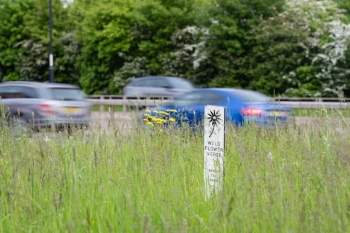
Transport for London (TfL) says it has delivered its pledge of doubling wildflower verges in roadside areas to encourage biodiversity.
It pledged last year to increase biodiversity, mitigate climate change and become more sustainable in its operations by increasing the amount of wildflower verges and said it has now doubled the area managed in this way to more than 260,000 square metres.
TfL added that the sites are managed to promote biodiversity by reducing mowing frequency, but that it continues to regularly mow the edges.
As well as creating a supply of nectar and other food resources, plus shelter, for wildlife including bees, butterflies, birds and small mammals, wildflower verges transfer carbon dioxide from the air into the soil and reduce emissions from mowing.
TfL said the introduction of new wildflower verges formed a key part of its commitment to enhance biodiversity across its estate and that there is now the equivalent of 37 football pitches of wildflower verges across its road network.
Chief safety health and environment officer Lilli Matson said: ‘We are excited to expand biodiversity in London, making the capital greener and healthier.
‘The new wildflower verges will encourage biodiversity and make London a more liveable and nature-rich city.
‘We will continue to work with our partners to improve our network and reduce impacts of climate change.’
TfL said it has also recently completed work on a scheme at Tolworth Roundabout to help mitigate the impacts of climate change by creating over 6,000 square metres of sustainable drainable systems (SuDS).
It added that its rapid expansion of SuDS across London has seen it exceeding its green scorecard annual target of 5,000 square metres of SuDS each financial year.
These measurements and targets count the area of catchment draining into SuDS, rather than the size of the sustainable drainage resource.













